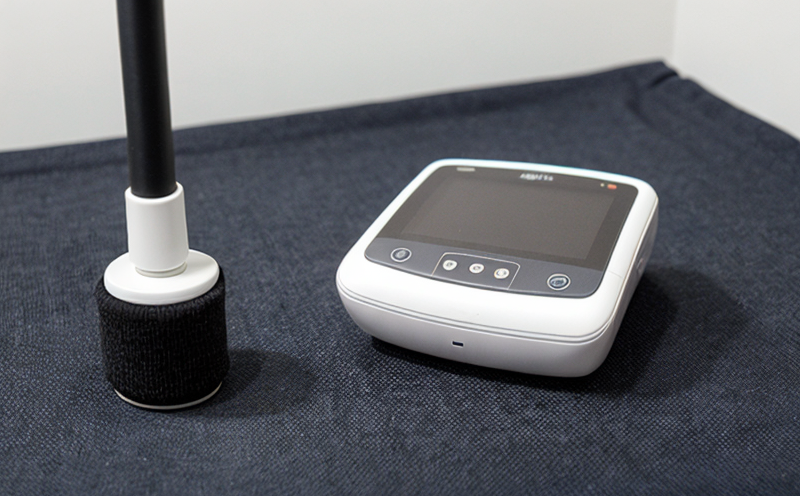DIN EN 61340 Electrostatic properties of flexible functional materials
The DIN EN 61340 standard addresses the electrostatic properties of flexible functional materials, particularly focusing on their behavior under static electricity conditions. This service is crucial for ensuring that textiles and other flexible materials meet the necessary safety and performance requirements in various sectors such as electronics, aviation, and medical equipment.
The DIN EN 61340 standard specifies methods to measure the electrostatic properties of these materials. Electrostatic discharge can have significant implications on the functionality and safety of products made from these textiles. For instance, in the electronics sector, improper handling of static-sensitive components can lead to costly damage or failures.
Testing according to DIN EN 61340 helps manufacturers ensure that their products are safe and reliable under electrostatic conditions. This includes assessing the chargeability, charging rate, discharge rate, and surface resistivity of flexible functional materials. The test methods provided in this standard help identify any potential risks associated with static electricity.
The testing process involves preparing specimens according to specified dimensions and then subjecting them to controlled environmental conditions. Various instruments are used for measuring the electrostatic properties, including capacitance meters and resistance testers. Reporting is comprehensive, detailing the results of each test parameter along with recommendations for improving the materials if necessary.
Compliance with DIN EN 61340 is essential not only for quality control but also for meeting regulatory requirements in many industries. By adhering to this standard, businesses can ensure their products are safe and meet international standards, thereby reducing the risk of product recalls or safety issues.
In summary, testing electrostatic properties according to DIN EN 61340 is vital for maintaining high-quality control practices and ensuring regulatory compliance across various sectors. This service plays a critical role in enhancing the reliability and safety of products made from flexible functional materials.
Why It Matters
The electrostatic properties of textiles are significant because they can affect product performance, user safety, and overall quality. In industries like electronics, aviation, and medical devices, even small amounts of static electricity can lead to serious issues such as short circuits or life-threatening situations.
- Electrostatic discharge (ESD) in sensitive electronic components can cause permanent damage.
- In aerospace, improper handling due to static can lead to costly delays and safety hazards.
- In healthcare settings, static electricity can pose risks to patients and staff.
The importance of electrostatic control extends beyond just the electronics sector. In sectors like textiles, it ensures that materials are suitable for various applications without compromising on quality or performance. Testing according to DIN EN 61340 helps identify any potential issues early in the production process, allowing manufacturers to address them promptly.
By ensuring compliance with this standard, companies can enhance their reputation and trustworthiness among customers, particularly those who demand high levels of safety and reliability from their suppliers. This testing also supports ongoing efforts towards sustainable practices by minimizing waste and improving product longevity.
Benefits
- Enhanced Product Quality: Ensures that the electrostatic properties meet industry standards, leading to higher quality products.
- Increased Safety: Reduces risks associated with static electricity in sensitive environments such as electronics and healthcare facilities.
- Better Customer Satisfaction: By meeting regulatory requirements, companies can build stronger relationships with their customers.
- Reduced Costs: Early identification of issues through testing helps avoid costly recalls or product replacements later on.
- Improved Reputation: Compliance with international standards like DIN EN 61340 enhances a company's reputation in the market.
The benefits extend beyond just immediate outcomes. By investing in electrostatic property testing, businesses can future-proof their products and stay ahead of evolving industry trends and regulations.
Use Cases and Application Examples
| Application | Description |
|---|---|
| Electronics Manufacturing | Testing ensures that materials used in the production of sensitive electronic components do not cause static discharge. |
| Aerospace and Defense | Ensures that textiles used in aircraft interiors and protective gear are free from electrostatic hazards. |
| Medical Devices | Measures the static properties of materials used in medical devices to prevent patient harm due to ESD. |
| Textile Manufacturing | Identifies suitable materials for high-tech applications that require electrostatic stability. |
| Product Type | Description |
|---|---|
| Flexible Functional Fabrics | Tailored textiles used in electronics, medical devices, and aerospace applications that require electrostatic stability. |
| Antistatic Coatings | Materials coated with antistatic agents to reduce static electricity buildup on surfaces. |
| Medical Gloves | Gloves designed for use in high-stress environments where static discharge could affect patient care. |
| Aircraft Cabin Linings | Linings that prevent the accumulation of static electricity, ensuring passenger safety and comfort. |





